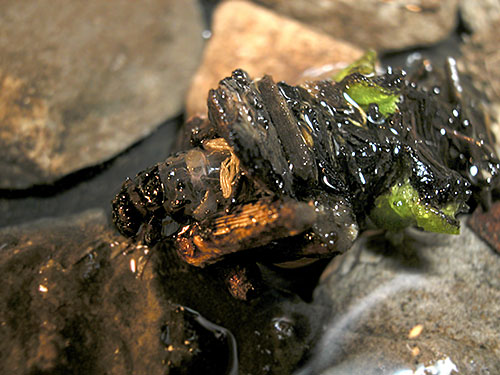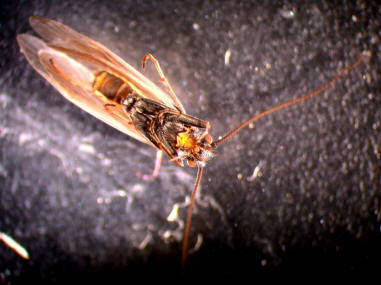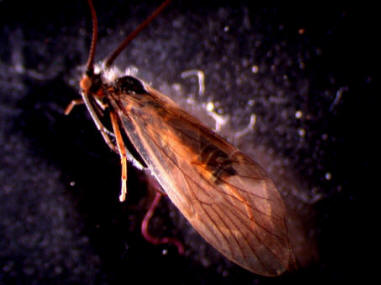Adaptation
Mother's Day Caddisfly can go through hydropneustic, a coetaneous type of reparation. This takes place over soft surfaces of the body. They could also have simple gills. This species can increase the amount of oxygen passing over its body by undulating their abdomen to have the stream pass over their bodies more rapidly, thus making living in oxygen poor habitats or deep lakes (Mcafferty 1981).
They use fixed silken nets to obtain food because they are highly predaceous. The silk is put out from near the tip of the labium of the larva (Gallelpp 1977).
This species uses a four-sided log cabin or a cylindrical wound with thin strips types of retreats with only plants, with only rocks they make cylindrical, gradually tapering and or curved, and the last type of retreat they make is mostly silken and cylindrical (Gallelpp 1974).
 Example
of encased caddisfly larva. Photo thanks to
John Fowler
Example
of encased caddisfly larva. Photo thanks to
John Fowler
They make their cases, retreats, nets, and cocoons dependent on production and spinning of silk. It is also related to what is around them and what the best material is for shelter, camouflage, respiration, and feeding behavior (Krueger and Waters 1983).
The cases are also uniquely adapted to their environment. In strong currents one would most likely find a Caddisfly to have a streamline and resistant case to crushing and possibly with twigs coming out of the back of the case for use like rudders.
The cases are humpless. No ocelli (eyespots used for detecting changes in light brightness). As larva they are crawlers, swimmers, or burrowers. As pupal they are sedentary and as adults they can fly either well or not so well but all are good runners (Flint 1984).

